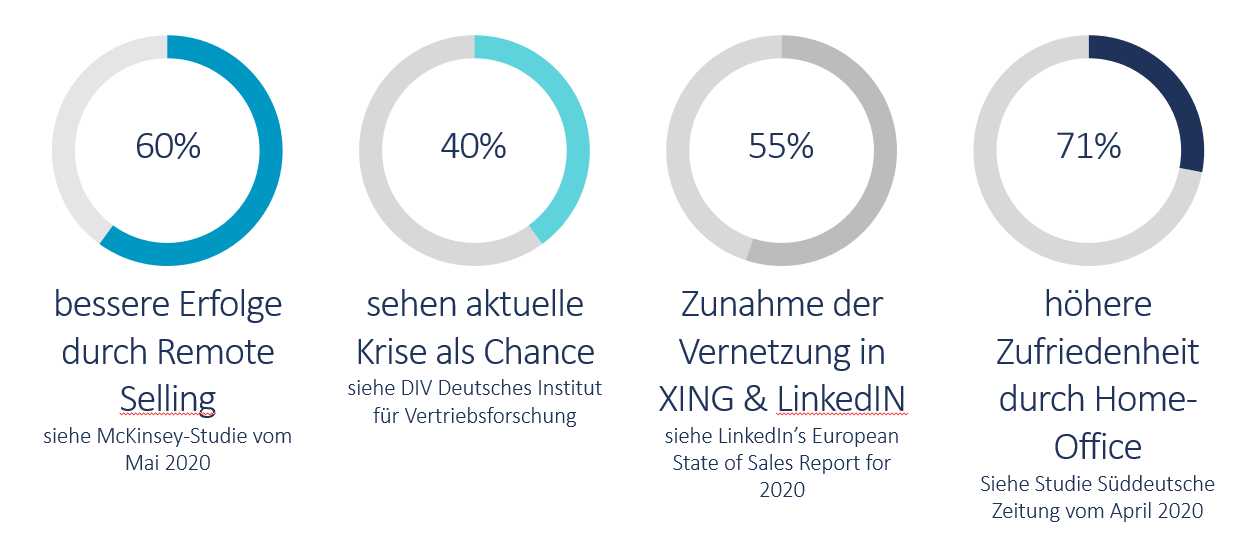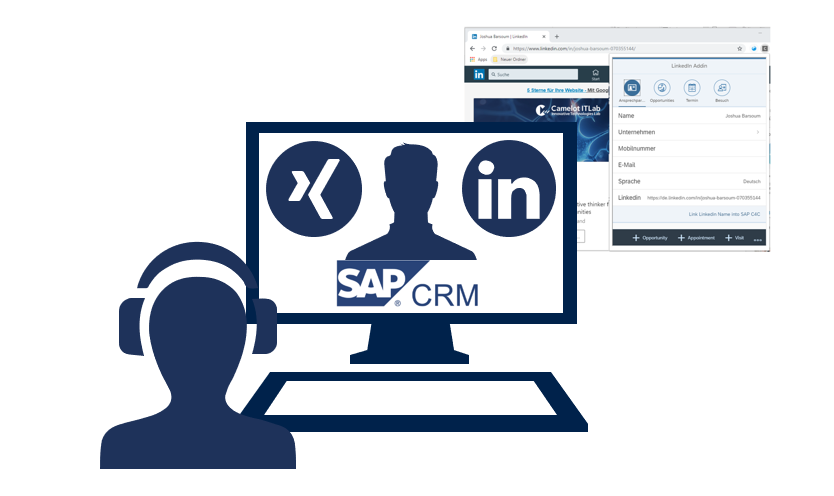“Those who maintain their address data pave the way to success.” We all know this wisdom in sales – but how will we deal with address data maintenance in future in the age of digital transformation to Sales 4.0?
Intelligent sales tools increase performance, optimize customer relations and enable a 360-degree view of the contact person or customer. In most cases, the company’s CRM system is the central data hub. This is the ideal setup from a company’s point of view.
Sources: McKinsey, DIV, LinkedIn, Süddeutsche Zeitung
Driven by the pandemic, the digital leap into our sales future will be accelerated significantly. This is also shown by the above-mentioned key figures taken from various surveys and studies.
During a video conference, Prof. Dr. Christian Schmitz, as scientific adviser of the German Institute for Sales Research (DIV) also provided at least two performance levers via remote selling:
- Distributors achieve a higher number of contacts in total
- At the same time, a higher number of high-quality contacts with A and B customers is possible (sales are not tied to regional structures or travel time optimization)
Increase in the quality of contact data through an increase in remote selling?
Growth in contact frequency, as well as in networking in business networks, increases the pressure for implementing a central data hub, the company CRM system, in order to map these relationships and maintain contact data in a central location. Otherwise, a company will not only lose data in the long run, but also relationships and ultimately corporate value.
Experience has shown that all of us in sales expect digitization to fully integrate the systems and automatically synchronize the data in the CRM system. Usually, this expectation comes from the fact that sales-oriented employees are not particularly fond of documentation and that maintaining such things is not one of their strengths. But do we really meet these requirements in reality? Probably not, because the interfaces are often not available or too expensive to operate. What’s more, important legal issues must also be considered in this regard.
Example: research into potential interested parties in LinkedIn/XING and a comparison with the SAP Sales Cloud
The diagram shows a sales employee who uses the two business platforms Xing and LinkedIn to analyze his existing contacts and contact persons (buyer persona) at his preferred customers and to network with them by implicitly addressing them.
He would like to use the two platforms to check directly whether the contacts already exist in the CRM system and what information is available about them. If no contact exists yet, it should be created directly from the XING or LinkedIn data. This is what the companies would like, in order to be able to act and react as efficiently as possible.
Unfortunately, however, this usually fails when performing the initial check in the CRM system, as this is often not possible via the platforms, which means the data would have to be entered manually in the CRM system, which of course would also need to be opened. And this step is usually only taken when an opportunity arises, which, from the company’s point of view, happens too late and thus represents a risk.
Therefore, when selecting intelligent sales tools, please make sure the functionality described above is also available for your company CRM system, as this not only increases the satisfaction of your sales staff, but also improves the quality of your corporate data.
For the SAP Sales Cloud, this is possible with a simple plug-in. You can read more about it in the following article:
https://blog.camelot-group.com/2019/05/integration-of-business-networks-in-the-sap-sales-cloud//
We would like to thank Jimmy Jüttner for his valuable contribution to this article.



